Seventh Street NW
German Roots in DC
-

A fire insurance company at 7th and Pennsylvania Avenue.
-
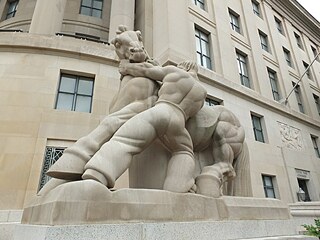
'Man Controlling Trade,' two sculptures of horses restrained by men. Designed in the late 1930's by American artist Michael Lantz (1908-1988) and completed in 1942, this sculpture is located in front of the Federal Trade Commission on 6th Street between Pennsylvania and Constitution Avenues, N.W. (Pennsylvania Avenue side). The stonecutter was Jakob Schwalb, president of the Washington Sängerbund from 1936 to 1937 and 1946 to 1951.
-
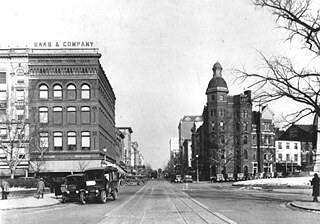
7th Street NW, looking north from Pennsylvania Avenue, 1935. With its busy street car lines and heavy automobile traffic, the commercial life of 7th Street is still very evident in this pre-suburban, pre-war, and pre-shopping center era. In the distance, the dome of the then future, now former Marlo’s Furniture Store gleams in the sun at the corner of 7th and I Streets.
-
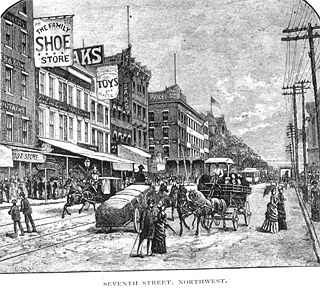
Engraving, 1875. Fashionable ladies and gentlemen seem unperturbed by the traffic bearing down on them in this engraving signed by 'Kilburn.' Crowds of people swarm under the shop awnings, richly marked with commercial signs, while an American flag proudly waves overhead. This shopping street is Busy, Modern, yet Elegant and Sophisticated.
-
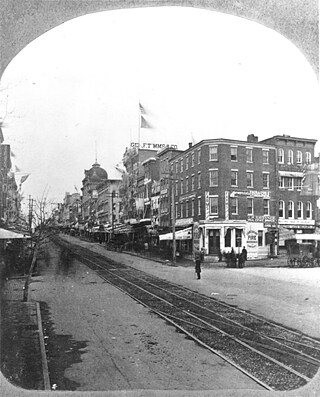
7th Street, east side, decorated for President James Garfield’s inauguration, March 4, 1881. The Washington Sängerbund was part of the parade for this occasion. Unlike the 1875 engraving, this photograph conveys a less elegant, more gritty impression of life on 7th Street. The hurly-burly reality of this commercial streetscape comes through vividly—and realistically. On July 2, 1881, four months after this picture was taken, President Garfield was shot by a deranged office-seeker at the Baltimore & Potomac Railroad Station, then situated where the National Gallery of Art’s West Building now stands. Garfield died of his wounds on September 19.
-
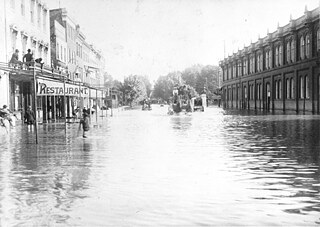
Flood, 200 block of 7th Street NW, 1889, looking south toward the Mall. Floods don’t stop these carriages and the men and boys in the picture seem to be having a fine time watching and listening to the horses charge through the water. Center Market can be seen on the right.